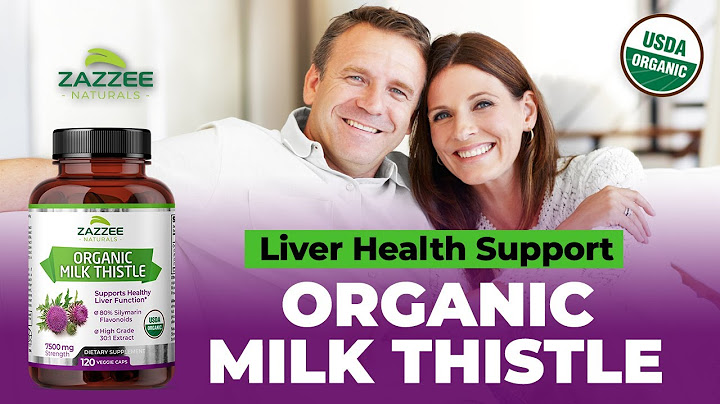Planning on exclusively pumping? Show
Or are you already exclusively pumping? Breastfeeding versus formula feeding is a false dichotomy. It doesn’t necessarily need to be only one or the other. Lots of possibilities exist along the spectrum of infant feeding. Instead of an either/or choice, imagine infant feeding as a continuum, with full breastfeeding at one end and full formula feeding opposite. In between are many combinations – one of which would be providing your baby with pumped breastmilk for all or most feedings. We’re inundated with messages that ‘breast is best’ – and the science does support this – but what if you can’t breastfeed? Or if you just don’t want to? Many women assume that formula is the only answer. Few women are ever told that they can pump and provide breastmilk instead. We’re here to say you certainly can! 7 Secrets To Exclusive PumpingHere are 7 secrets to success as an exclusively pumping mother: Exclusively Pumping Secret #1: Sort Out Your GoalsSome women need to pump because their babies are born too early, and some mothers and babies are separated after birth for medical reasons. These mothers may really want to breastfeed, but may not be able to at first. In other cases, breastfeeding may get off to a poor start. Maybe baby isn’t latching well, is losing weight, or is unable to effectively transfer milk. Or maybe mother’s milk supply is low. These women start pumping to increase supply, or use breastmilk to supplement their babies while they work to correct feeding issues. Occasionally, mothers are reluctant to put their baby to the breast at all, for reasons that range from sexual abuse to personal discomfort, but still want to provide breastmilk. In all of these cases, pumping can be an answer. But knowing why you’re pumping and how long you plan to continue pumping can help. Are you pumping just until your preemie is big enough to feed at the breast? Or until your milk supply increases or your baby’s weight gain improves? Or are you in it for the long haul – pumping for all of your baby’s feedings until your baby is ready to wean? These answers will prepare you mentally for the job you’re doing. Exclusively Pumping Secret #2: Start As Soon As You CanIf you’re pumping from birth, the sooner you start the better. Studies show that the more milk that’s removed in the first three weeks after birth, the better a mother’s milk supply will be in the long run. In any case, you should pump as often as your baby would be feeding at the breast – for a newborn this may mean pumping every two hours around the clock! Exclusively Pumping Secret #3: Get To Know Your Breast PumpUse the highest quality pump you can afford. If money is tight, consider hiring the better quality breastpumps from organisations like the Australian Breastfeeding Association. Some pumps are more efficient than others – a hospital-grade pump is the top of the line, but single-user electric pumps are the ones most exclusively pumping mothers use. Don’t discount hand pumps or manual milk expression, either. For some moms these methods work better than anything else. Double pumping (pumping both breasts at the same time) can cut down your time spent on the task. Learn how to operate your pump, and learn how your body reacts to it. Sometimes adjusting the suction level or the number of cycles per minute can change your output. Don’t be discouraged if you only get a little bit of milk the first few times you pump. They key is to elicit ‘let-downs’ – finding a way to relax while pumping may help with this. Warm compresses, breast massage or compression, and even hearing your baby coo or cry can help with milk ejections. Figure out what your best triggers are, and make use of them when pumping. You may also want to learn more about ‘hands-on pumping’ – a way to maximise the amount of milk you can express. Just like feeding at the breast, if it hurts, something is wrong. Make sure the pump flange is the right size for your breast. Adjust the settings – having the pump on high isn’t always the most productive. And over time, pump parts do wear out. So check that yours are in working order. Exclusively Pumping Secret #4: How Often, How Much, How LongWell known IBCLC and breastfeeding author, Nancy Mohrbacher, writes that every woman has a “magic number” – the number of pumping sessions she needs each day to maintain her milk supply. It may take time to find yours. This will vary depending on your baby’s age and how much milk you need, as well as your breast storage capacity. Are you pumping for all of baby’s feedings? Is your baby getting some formula and some breastmilk? Ideally, you would pump as often as your baby is feeding – but this isn’t always practical. You will need to find a pumping schedule that works for you. If you aren’t getting as much milk as you need, add more pumping sessions, try not to multi-task while pumping, use methods to maximise output, and make sure you’re getting up a couple of times to pump at night. ‘Full’ breast emptying is one key to making more milk. As for how long to pump at each session, in the beginning (the first few days after birth), pumping for 10-15 minutes every 2.5 to 3 hours is effective. Around day 3 and 4 when your milk comes in, increasing pumping sessions to 20-30 minutes is a good idea. Then you can pump 10-15 minutes about six times each day to maintain production. Any dip in supply, pump more often. Adding more short pumping sessions may be more effective than lengthening the existing sessions. Exclusively Pumping Secret #5: Don’t Give Up!You will meet those who will tell you there’s no way you can keep up a good milk supply with pumping alone. Others will ask you why in the world you would want to keep pumping. Your mother-in-law might suggest you just give in and use formula. Your own partner may wonder aloud why you’re going through all the trouble to pump. Let your haters be your motivators. Keep doing what you feel is best for your baby, and don’t let anyone tell you it can’t be done. Exclusively Pumping Secret #6: Know How To Overcome Common DifficultiesRemember that there’s no quick fix to any breastfeeding difficulty, including pumping. Milk supply concerns are probably the most common issue experienced by exclusive pumping mothers. But other problems like blocked or plugged ducts, mastitis, sore nipples, etc. can crop up, too. The urge to quit happens to many exclusively pumping mothers at some point, as does the emotionally charged question, ‘Are you breastfeeding?’ Overcoming these types of mental hurdles can be just as difficult as a physical problem like decreasing supply. Exclusively Pumping Secret #7: Get Help And SupportA supportive lactation consultant can help you with technical problems, but finding other exclusively pumping mothers may be your best source of encouragement, support and ideas. If you’re exclusively pumping, there are a couple of important online resources, as well as a book, just for you. Stephanie Casemore has written a book, Exclusively Pumping Breast Milk, which was updated in 2013. Her other book, Breastfeeding Take Two, is excellent as well! Ms. Casemore maintains a website, blog and Facebook page specifically for exclusively pumping mothers – learn more at exclusivelypumping.com. Another useful blog is maintained by exclusively pumping mother, Nichole Filippone, at exclusivepumpers.com. While the internet can be a source of conflicting information, it’s also a wonderful way to connect with other exclusively pumping mothers – and you won’t feel so alone in your endeavour to provide for your baby the best way you can. Several Facebook groups are committed to a supportive environment for exclusively pumping mothers to share their successes, frustrations, questions, and more. Best Selling Breast Pump The Spectra is an Amazon Top Choice product, due to loads of great reviews, like this: “Very impressed! Here’s why you want this pump: 1. It’s rechargeable. Lasts me at least 4 sessions and could be more; haven’t pushed it past that. 2. It’s super quiet. Like, barely audible. 3. Lightweight. 4. Very easy to clean. Uses duckbill valves instead of the thin membranes like the Medela pumps. Closed-system design keeps the machine clean. 5. Pumps quickly and comfortably. I can pump in 10-15 minutes. The massage mode works nicely for increasing output.” – Lilly “I wish I had found this pump when I first started breastfeeding, would’ve saved me a lot of pain and kept my supply up.” – Desirae “OBSESSED! Best thing ever. I heard about the Spectra S2 – I ordered it and never looked back! So much more comfortable, efficient, and slightly more productive. I love the way it sucks – it doesn’t hurt!” – Lori Find out more information and prices on the Spectra here. + Popular Questions Our Readers Ask Q: Does a faint line on your pregnancy test mean a positive result?A: In most cases, a faint line on your pregnancy test does mean a positive result. Pregnancy tests are designed to detect hCG in your urine, which will be present if conception has occurred. Q: What are the ways to increase my chances of having a boy?A: In order to increase your chances of having a boy, choose sexual positions like doggy style, standing up and straddling – all of these allow for deep penetration. Be sure to have intercourse right before ovulation, and use protection in the days before it. Q: When do babies begin to speak?A: Babies begin to speak when they’re between the ages of 11 and 14 months old. They usually say ‘dada’ and ‘mama’ first, which is probably not surprising! Q: Can you drink hot tea while pregnant?A: Yes, you can still continue drinking hot tea while pregnant. But it’s healthier for your baby if you cut back on caffeine. Instead, opt for a safe herbal tea, such as a raspberry leaf, dandelion, nettle, or ginger tea. How long does it take to increase milk supply when exclusively pumping?You can expect power pumping to take anywhere from 3 days to 3 weeks to truly increase supply. Following the power pumping set is far more beneficial than extended pumping sessions, don't pump for an hour non-stop as it can damage your breasts and isn't as helpful to increase supply.
How much milk should I be producing when exclusively pumping?If you're exclusively pumping, on average, you should try maintain full milk production of about 25-35 oz. (750-1,035 mL) per 24 hours. It may take some time to achieve this target, do not worry about hitting this on day one! Babies may take more milk from the bottle than when breastfeeding.
Do you produce less milk when exclusively pumping?One study of exclusively pumping mothers found that in 65.7% of pumping sessions observed, the right breast produced at least slightly more milk. In another similar study, only 2.6% of the exclusively pumping mothers displayed equal pumping output from both breasts.
|

Related Posts
Advertising
LATEST NEWS
Advertising
Populer
Advertising
About

Copyright © 2024 en.frojeostern Inc.


















